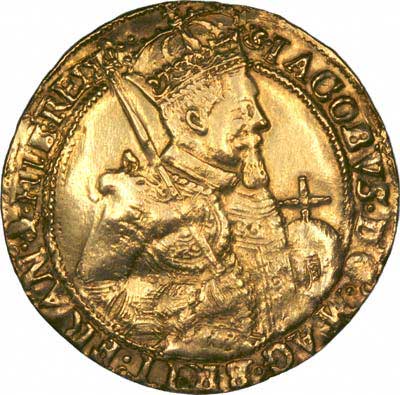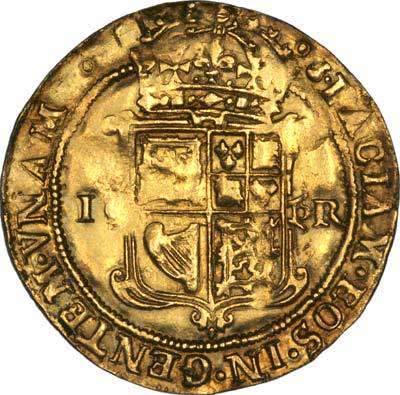Scottish Gold Coins
Scottish Gold Coins
The first Scottish gold coin was the Noble, introduced by David II in 1357. This was modelled on the English coin of the same name, as were many Scottish coins, mainly because of the popularity and wide acceptance of English coins in Continental Europe, because of their good reputation for quality of fineness of alloy.
The Gold Noble
The first gold noble was similar to the English gold noble of Edward III which had been introduced in 1344. It is thought that most specimens of the first issue were melted down, and this remains an extremely rare coin. Although the English noble continued until 1464, its Scottish counterpart only survived its first issue, and was never reissued. Its face value was one third of a pound, equal to half a mark.
Gold Lion
The next gold coin issued for Scotland was the Lion first issued by Robert III in or shortly after 1390, possibly based on the English gold Leopard, also first issued under Edward III in 1344. The lion had a face value of five shillings. There was also a half-lion or demi-lion.
These lion issues appear to have been successful, entering circulation, and worn specimens do survive.
Demy & Half Demy - James I of Scotland
Under James I, who acceded in 1406, two new gold denominations were introduced, a demy or demi, which was based on an English half noble, hence its name (French demi = half). Its initial face value was nine shillings. The half demy was, slightly strangely, a "half half!"
James II
The Demy continued under James II, and both the lion and half lion were reissued.
Gold Rider - James III, 1460 to 1488
Under James III, four new denominations of gold coin were introduced. The first of these was the gold rider, named after the equestrian figure of the king appearing on the obverse. There was also a half rider, and a quarter rider.
Gold Unicorn
About 1484, also under James III, a gold Unicorn was introduced, with a face value of eighteen shillings. Tjhis continued in issue under James IV, when a half unicorn was also issued.
James V
Under James V, the number of gold denominations turned from a rash into an epidemic, with a ducat, a two thirds ducat, a third ducat, and a "crown of twenty shillings".
Gold Ducat
The Scottish gold ducat was first issued under James V in 1539. It was modelled on the existing continental ducat issues. In Scotland it had a value of forty shillings.
The Scottish ducat featured the king wearing a Scotch bonnet, perhaps he was the original member of the Red Hot Chili Peppers! Because of this, it is sometimes referred to as a "bonnet piece". It was the first Scottish coin to bear a date, and therefore also the first British coin.
Queen Mary - 1542 to 1567
The rash of new gold denominations continued under Mary, with a gold Ryal, Half Ryal, Forty Four Shillings, Twenty Two Shillings, Crown (or Abbey Crown), and Twenty Shillings.
Gold Ryal
A gold ryal was issued in 1542, with a realisticv portriat of May, this is sometime referred to as a Portrait Ryal, and had a value of three pounds.
Forty Four Shillings
As its name implies, this had a face value of 44 shillings. It may be tempting to consideer this as a four guinea piece, but this would be erroneous for various reasons.
Gold Half Ryal
This speaks for itself as being half the value of a ryal.
Twenty Two Shillings
Having a face value of 22 shillings, this denomination does not appear to have a short or familiar name.
Gold Abbey Crown
A gold crown was issued between 1542 and 1561. It is soemtimes referred to as an Abbey Crown, and was struck at Holyrood Abbey.
Twenty Shillings
Only issued in 1543, it seems surprising that this was not known as a pound coin.
|


